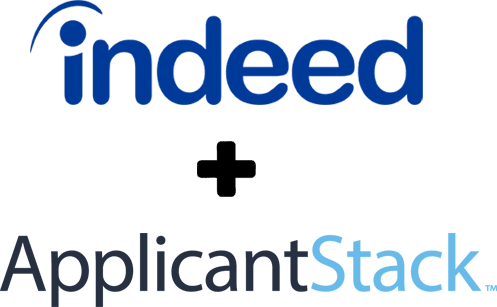In the world of work, talent acquisition takes on many forms beyond the typical direct, permanent-employee route. One of those alternative options is called contract-to-hire. This hiring arrangement brings an employee on board as a contractor for a predetermined period.
In this blog, we’re discussing everything you need to know about a contract-to-hire arrangement, including how it works, why it can be beneficial for your organization and how it compares to other hiring practices.
What Is Contract-To-Hire and How Does It Work?
Simply put, a contract-to-hire arrangement means that an individual is initially hired as an independent contractor with the possibility of being brought on as a permanent employee once the contract is up. During the contract period, the individual typically works on specific projects or tasks. They generally have the same responsibilities and expectations as a regular, permanent employee. But on paper, they’re still an independent contractor.
At the end of the contract period, the company will evaluate the contractor’s performance, skills and cultural fit within the organization. They use this information to determine whether they would like to offer them a permanent position.
It’s a little unconventional, but a contract-to-hire arrangement can actually work in favor of both the contractor and the employer in different ways. For example, this type of arrangement allows both the employer and the contractor to assess each other before committing to a long-term employment relationship. From the employer’s perspective, they might think:
- If given the opportunity, would this person be a good fit for us?
- Does this candidate have the skills and experience demanded of the role?
- How do they get along with other employees?
On the other hand, the contractor may ask themselves questions like:
- Can this employer meet my needs in terms of compensation, job satisfaction and professional development?
- Do their values and culture align with my own?
Questions like these, and more, are examples of what contractors and employers can discover about each other throughout the contract-to-hire process.
Industries Where It’s Common

Contract-to-hire is common in industries with high demand for specialized skills. It’s also useful when companies want to manage risk before making a permanent hiring decision.
You might see these types of roles in:
- Information Technology (IT): IT companies often hire contractors for specific projects or to fill temporary skill gaps. Software development, cybersecurity, network administration and data analysis are roles that are frequently offered as contract-to-hire opportunities.
- Healthcare: Hospitals, clinics and healthcare organizations often utilize contract-to-hire arrangements. Roles include nurses, medical technicians, therapists and administrative staff.
- Finance and Accounting: Financial institutions and accounting firms may hire contract workers for tasks such as auditing, financial analysis, tax preparation and project management.
- Creative and Media: Advertising agencies, design firms and media companies often employ contractors for roles in graphic design, content creation, video production and marketing.
- Engineering and Construction: Engineering firms and construction companies frequently hire contractors for specific projects or to address short-term staffing needs. The roles may be in civil engineering, project management and construction supervision.
- Education: Schools, colleges and educational organizations sometimes hire instructors on a contract to fill temporary vacancies or meet fluctuating demand.
No matter the industry or specialization, here’s how these arrangements typically unfold at a glance:
- Employers identify a need for additional resources or talent.
- Recruiting strategies begin.
- The employer identifies a suitable contactor and contract negotiation begins.
- Onboarding starts.
- The contractor carries out their duties.
- At the end of the term, the employer evaluates the contractor.
- The employer makes a hiring decision.
- The contractor transitions to a full-time employee.
What’s the Difference Between Direct Hire and Contract-To-Hire?
Permanent employees and contract-to-hire folks typically share similar job responsibilities and are treated nearly the same. It can be difficult to determine the difference between a full-time position and a contract role. The main differentiators are the employment relationship and the timing of the hiring process. Now that we know the conditions of contract-to-hire arrangements, here’s how direct hires compare:
- Initiation: In a direct hire arrangement, the employer hires an employee directly into a permanent position without an initial contract period.
- Intention: A direct-hire employee is typically hired with the intention of a long-term employment relationship from the outset, whereas contract workers aren’t necessarily expected to stick around afterward.
- Timing: The hiring process for direct hires usually involves standard recruitment procedures, such as job postings, interviews, background checks and negotiations of salary and benefits. For a contract role, workers are typically head-hunted or found through staffing agencies.
- Tenure: Direct hires are expected to remain with the company for an indefinite period, whereas those who start as contract employees may leave sooner, depending on their contract terms.
The Potential Value
There are more than a few good reasons why some employers opt for contract-to-hire arrangements. Examples include:
- Access to specialized skills and experienced workers: Employers can access specialized skills and expertise temporarily through contract-to-hire arrangements. As such, they can address short-term needs or projects that require specific technical or niche skills without hiring permanent employees.
- Risk mitigation: By initially engaging contractors on a temporary basis, employers can mitigate some of the risks inherent to direct hiring. These arrangements allow employers to assess the contractor’s performance, skills and fit within the organization before making a long-term commitment.
- Reduced administrative burden: Hiring contractors through staffing agencies or as independent contractors can reduce the administrative burden associated with payroll processing, taxes and compliance with labor regulations. In this type of arrangement, this responsibility often falls on the staffing agency or the contractors themselves.
- Agility: By engaging contractors temporarily, employers can respond more quickly to changing market conditions, project deadlines or business priorities. They can adjust their workforce size and composition as needed to stay competitive and adapt to evolving circumstances.
Common Challenges With this Hiring Model
Of course, reaping the benefits of this hiring arrangement isn’t without its challenges. Since contractors are, on paper, working for themselves and providing a service to your organization, employers may lack control over how jobs get done.
So, let’s start there before outlining a couple of other common challenges:
- Limited loyalty and engagement: Unfortunately, some contractors may not feel the same level of loyalty or commitment to the organization as permanent employees, especially if they are uncertain about their long-term relationship with the company. This may affect their engagement, productivity and collaboration with colleagues.
- Job security: According to a recent survey, 85 percent of employed individuals express worry about their job security in 2024. With the cost of living at an all-time high, contract roles may be less appealing to those looking for long-term reliability in their employer.
- Limited pool of candidates: Finding qualified contractors who are willing to consider contract-to-hire positions can be challenging. Some candidates may prefer the stability of permanent employment or may be hesitant to take on temporary roles with uncertain long-term prospects.
- Competition from other organizations: Employers may face competition from other companies offering permanent positions, particularly in industries or regions with a high demand for talent.
Contract-To-Hire FAQ From Employers and Contractors
Still, have questions about contract-to-hire arrangements? We’ve got answers:
Can Contractors Quit a Contract-To-Hire Arrangement?
It depends on the contract terms. In some cases, yes, contractors can quit a contract-to-hire arrangement. Howeverm the process and implications may differ depending on the terms outlined in the contract and any applicable employment laws.
It’s also important to note that, while it’s possible in some circumstances, quitting early may strain the employer-employee relationship or damage a contractor’s reputation. So, read the contract carefully!
What Should Be Included in a Contract-To-Hire Agreement?
A contract-to-hire agreement should include any essential details that are pertinent to the job at hand, as well as conditions for employment and a termination clause. At the bare minimum, it’s good to have:
- The contract period (start date and end date).
- Scope of work.
- Compensation.
- Evaluation criteria to be eligible for full-time employment.
- Confidentiality and non-disclosure information.
- A termination clause.
Finding the Right Candidates for Your Open Roles
ApplicantStack is built for better hiring practices across the board, including seeking and securing the perfect contract-to-hire candidate for your job opening.
With this type of work arrangement, employers typically want to move quickly. Whether there’s a looming deadline or a special project that needs to be completed ASAP, finding, hiring and onboarding the right contractor has never been easier. To learn all about how Applicantstack can streamline your hiring and onboarding processes no matter the arrangement, check out our self-guided tour.
You can also get started on a free trial with no strings attached.
- Unlock Success With Expert Candidate Screening Strategies - April 30, 2024
- 3 Tips to Improve Communication with Applicants - April 26, 2024
- Understanding Contract-To-Hire and How It Works - April 23, 2024











